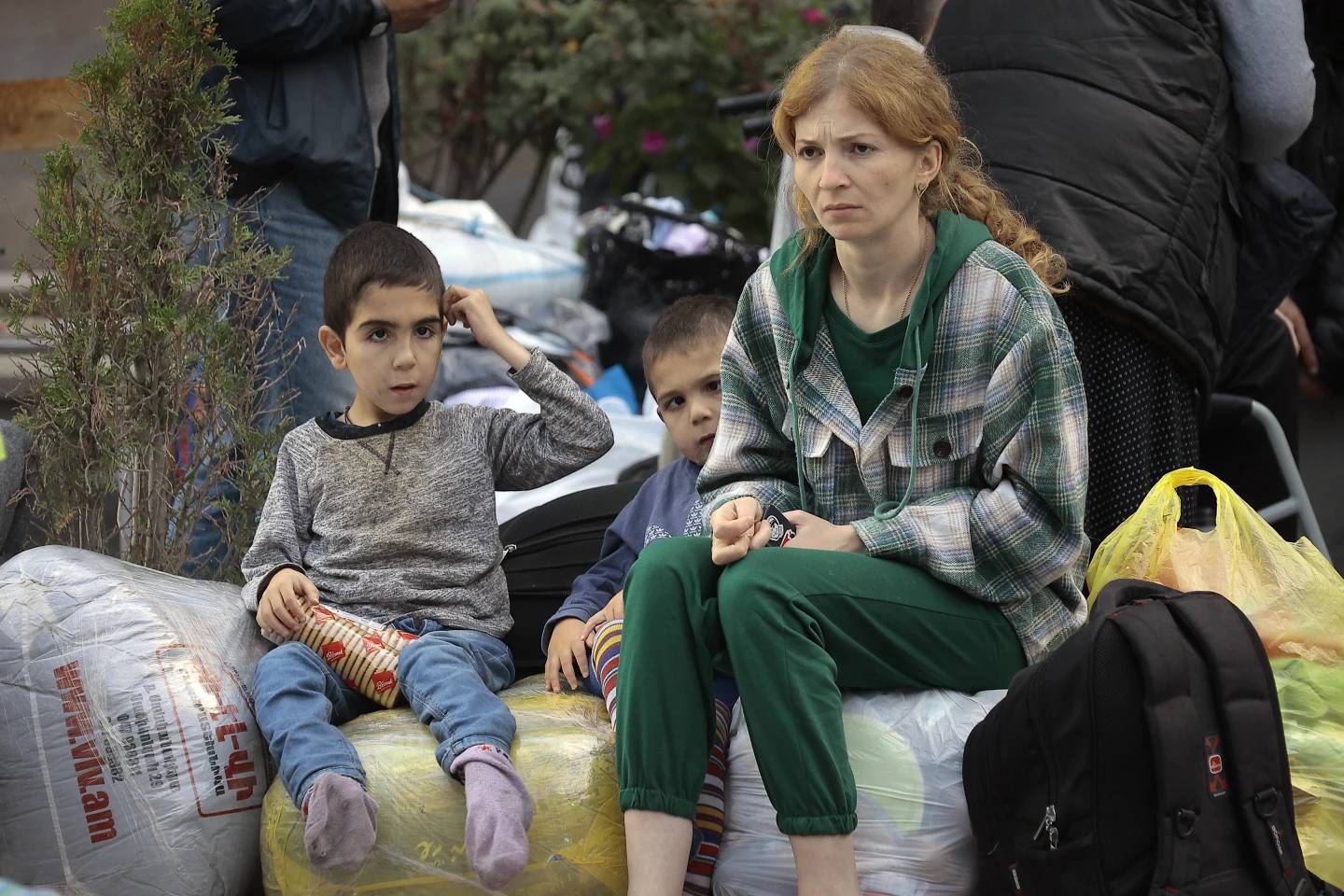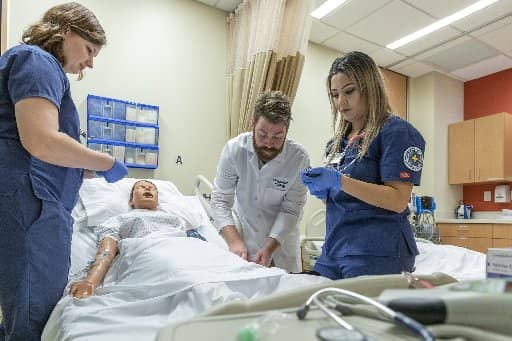ENID, Oklahoma — In Enid’s not-too-distant past, a trip to the hospital could be as much a spiritual journey as a physical one, with nurses equally ready to tend to matters of medicine and faith.
St. Mary’s Regional Medical Center, originally founded in 1915 as Enid Spring Sanatorium and Baths, was purchased in 1937 by the Adorers of the Blood of Christ of Wichita, Kansas, an order of Catholic nuns. The nuns, who also were trained and registered as nurses, remained at St. Mary’s through several changes of ownership, beginning in 1984, until 2009.
The Enid News & Eagle recently sat down at the Adorers of the Blood of Christ convent in Wichita with the last two nuns to serve at St. Mary’s: Sister Rosina Mies, now 88, and Sister Florentia Riebel, now 102 years old, who was at St. Mary’s for the entire term of the Adorers’ presence there, from 1937 to 2009.
Born in 1917, Riebel was one of 12 children — seven boys and five girls. Four of them, Riebel and three of her sisters, ended up taking religious vows in the Adorers of the Blood of Christ.
Riebel, who’s known to many in Enid as “Sister Flo,” joined the convent when she was 16 years old, after the influence of the order’s nuns called her to a religious life.
“When I looked around, I wasn’t interested in boys,” Riebel said with a laugh, “and some of the sisters came and taught us religion classes, and that’s what influenced me to enter the Precious Blood Sisters.”
She was followed a year later by her younger sister, Leona, and later by sisters Barbara and Winifred, known to her friends as Winnie.
Riebel credits her siblings’ visits to the convent with them deciding to follow her into the order. “Being around us, they figured that’s what they wanted to do, so they entered in,” she said.
Mies said in those days it wasn’t uncommon for multiple children from one family to enter the order.
“We have had a number where several members of the same family would come in,” she said. Her family, like Riebel’s, gave more than one child.
Mies entered at age 17, about four years after her older sister, Mary Joseph. Growing up, Mies said the children in her family were taught to respect the Adorers.
“Nobody ever said anything bad about a sister around my dad,” Mies said. “There was great respect for sisters in the house because of that.”
Like Riebel, Mies said she was drawn to the religious life by the influence of nuns who taught her in school.
The nuns could serve in a variety of capacities: At the convent, teaching school or serving on the bishop’s staff. Mies’s older sister, Sr. Mary Joseph, served the bishop’s staff in Oklahoma City, but both Mies and Riebel wanted to serve as nurses.
Riebel studied nursing about 10 years before Mies, and after passing her state boards was placed in charge of the second floor at St. Mary’s.
When the polio epidemic struck, Riebel said there were no physical therapy nurses in the area trained to work with polio patients. She was sent to Chicago for a year of training, after which she returned to St. Mary’s to work full time with polio patients, mostly children.
Working with the polio patients gave Riebel some of her most memorable experiences in Enid.
She recalled a 12-year-old boy, whom she drove in physical therapy with the will of a taskmaster to regain the use of his legs.
“As time went on, this particular patient became a Catholic, and he became a lawyer,” Riebel said, “and then 20 years later he had his wife call me — he still remembered me — and said, ‘Call Sister Flo and ask her to pray for me,’ because he was having open-heart surgery.”
With 72 years of service in the same hospital, it wasn’t uncommon for children Riebel had nursed to come back and visit her as adults.
One of those cases involved a young girl whose recovery was studied by the Vatican as a miracle.
The girl, about 2 years old, was bed-ridden, with her legs bound to keep her in a position where she couldn’t choke in her sleep. She was not expected to live.
Acting on her faith, Riebel brought to the girl a relic of Maria Matilda De Mattias, the nun who founded the Adorers of the Blood of Christ in 1834 in the small town of Acuto, Italy.
Riebel prayed to God, asked for intercession from Mother Maria Matilda, and touched the relic to the girl’s tongue.
The next day, Riebel asked another nun how the little girl was doing, and while she was waiting she “heard the pitter-patter of little feet.”
“She got out of that bed, she untied her legs, and came to me,” Riebel said.
That little girl grew up to be a healthy woman, had a family of her own and came back to Enid years later to visit Riebel.
When the Vatican took up the case of Mother Maria Matilda, Riebel’s testimony of the relic and the improbable curing of the young girl was used as evidence. Maria Matilda De Mattias was canonized by Pope John Paul II in May 2003, based on the evidence of another miraculous healing.
Sometimes, the experiences at St. Mary’s could only be explained by faith, Riebel said.
That was the case when a young woman, in her early-20s, came into the polio ward, ready to die.
“She said, ‘I can’t get well, and I want to die,’” Riebel said. The young woman had never known church or faith but wanted to be baptized before she died. Sensing there wasn’t time to call a priest, Riebel baptized the woman in the hospital room.
“I baptized her, and I prayed with her,” Riebel said. And then, the woman sat up and told Riebel Jesus was in the room.
“We just prayed together, and she saw him there,” Riebel said. “She saw him, and she closed her eyes and just died right there. God just took her.”
Faith in God was a constant aspect in all the nuns’ work, she said.
“When you took care of the patients, you always prayed with them asked God to take care of them,” she said, “and I think the way we put our faith and confidence in God, he really helped.”
Mies said that blend of faith and medicine was common, and necessary, in the hospital’s ward for cancer patients.
“After the doctors would talk to the patients about the chemotherapy, they were very, very frightened,” Mies said.
She said, oftentimes, the best medicine was simply a willing ear.
“I think a lot of times, what all of us should do is listen to what people have to say,” she said. “To have nurses who are supportive of the patients is the most important thing, especially with cancer patients. A lot of times you just had to be with them and pray with them.”
During her years at St. Mary’s, Mies said she saw many people come to faith as they neared death.
“There are some people for whom prayer just isn’t of value to them, until they get into the hospital,” she said. “Then, they need help, and they end up saying ‘God is here, and he is going to help me.’”
For those people, Mies said there often was an inner struggle between their resistance to faith and their need to reach out to God.
“It is very difficult, if you don’t believe in God or prayer, and then you end up with cancer,” Mies said. “It ends up being a real fight within them.”
For those patients, and for all who struggle with or reject faith today, Riebel and Mies had a unified message: “God loves them anyway.”
“God loves each and every person on the face of this earth, whether they know it or not,” Mies said.
“It’s up to us to let them know God loves them,” she said. “We love God very deeply with our whole hearts, and unless we can show that, we’re not really following our call.”
Today, 10 years after they left St. Mary’s, and well beyond when most people would retire, the last of Enid’s Adorers still feel that call.
“It’s our baptism that calls us,” Mies said. “It’s our baptism into the life of Christ that calls us to love, and to serve.”
Crux is dedicated to smart, wired and independent reporting on the Vatican and worldwide Catholic Church. That kind of reporting doesn’t come cheap, and we need your support. You can help Crux by giving a small amount monthly, or with a onetime gift. Please remember, Crux is a for-profit organization, so contributions are not tax-deductible.
















